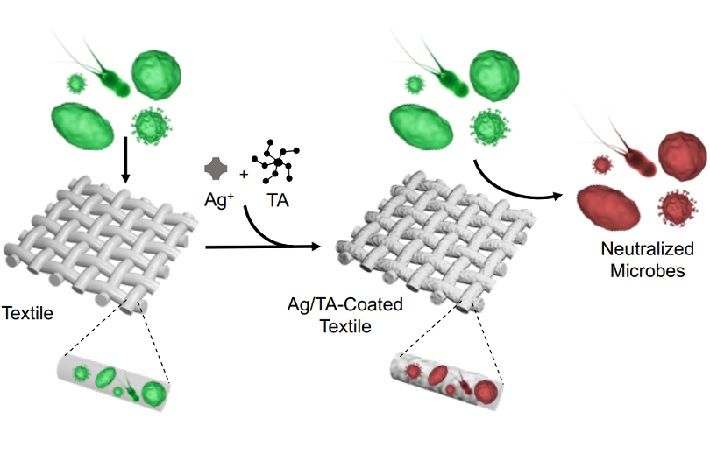
A team has pioneered a way to apply an antimicrobial silver coating to textiles that is cost effective, simple and has some useful implications too. They essentially used a compound known as a polyphenol, tannic acid (TA) specifically, to bind silver (Ag) to fabrics. Polyphenols are found in chocolate and red wine amongst other things, and are responsible for their infamous ability to stain clothing and tablecloths. Fortunately, the researchers’ coating, called Ag/TA, is completely clear so it doesn’t discolour textiles, but best of all, it can survive being washed, according to a press release by the University.
The first method might be useful for commercial clothing or fabric producers. Textiles can simply be bathed in a mixture of the silver compound and the polyphenol binder. Another method, perhaps more suited to small-scale settings, including the home, is to spray items of clothing, first with the silver compound and then with the polyphenol binder. An obvious advantage is that people can add the coating to existing items of clothing.
“As kids often do, my son stained his shirt with chocolate one day, and I couldn’t scrub it out. Associate professor Hirotaka Ejima and I have studied polyphenols for over a decade, but this chocolate incident got me thinking about using tannic acid to bind silver to fabrics. We think we’ve found two methods to apply our antimicrobial silver coating to textiles, suitable for different use cases. We wanted to study the effect of the antimicrobial coating not just on odour-causing bacteria, but also on fungi and pathogens like viruses. With so many variables to control, it was a challenge of time and complexity to test variations of compounds against variations of microorganisms. But through carefully optimising our testing methods, we found that the coating neutralises everything we tested it on. So, Ag/TA could be useful in hospitals and other ideally sterile environments,” postdoctoral fellow Joseph Richardson, said in a statement.
Fibre2Fashion News Desk (GK)

